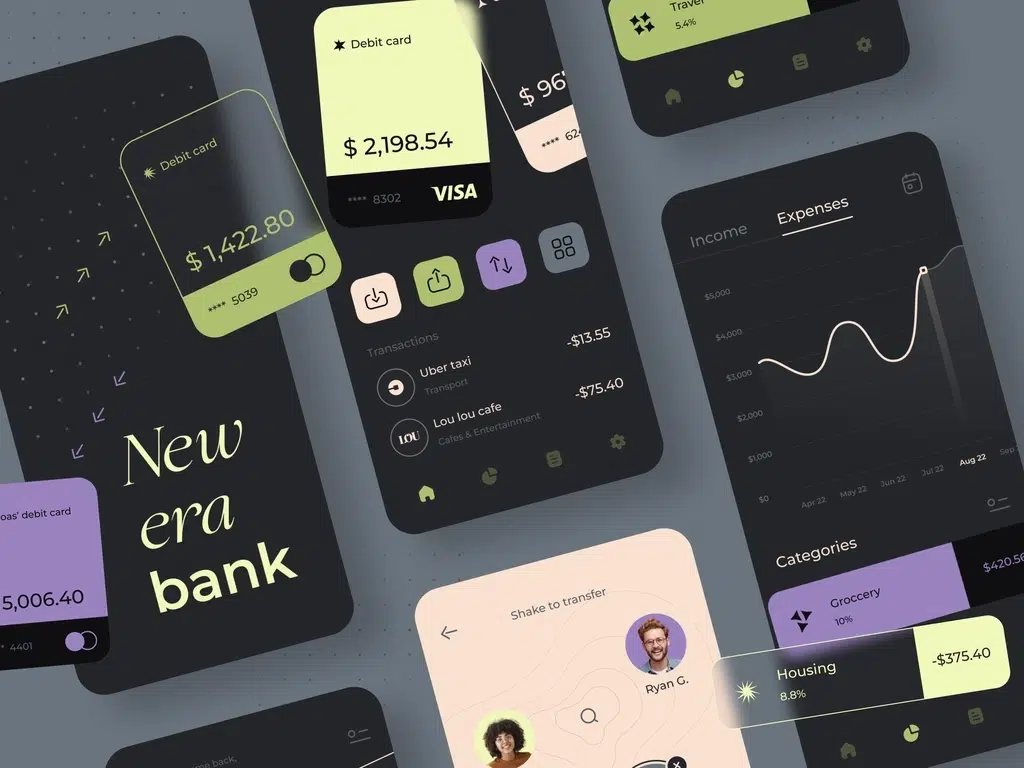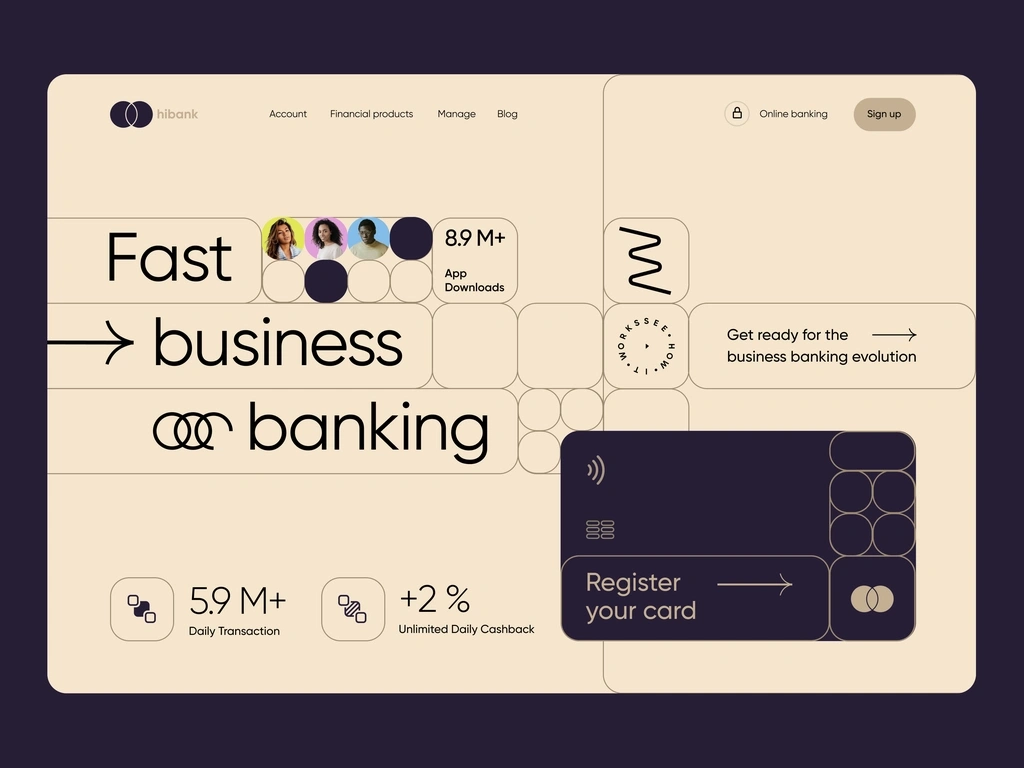Digital Transformation In Banking App Development: Why is it Required?
The banking industry is experiencing a significant digital transformation in banking, driven by advancements in technology. This article explores the impact of this transformation on banks, highlighting key trends, challenges, and benefits. From enhancing customer experiences to leveraging data analytics for banks and embracing open banking APIs, digital transformation in banking is reshaping how banks operate and engage with their customers.
In recent years, digital transformation in banking has become essential for banks to stay competitive, improve efficiency, and deliver exceptional experiences. By embracing banking technology, which includes technology in banking such as biometrics in banking, banks are optimizing processes, adopting customer-centric approaches, and meeting evolving expectations.
1. What Is Digital Transformation In Banking?

First things first. We start by defining what the digital transformation in banking process truly entails. Many people, hearing the phrase “digital transformation,” immediately imagine a conventional bank that develops its website and mobile applications, transitioning to providing its services remotely via smartphones, and minimizing paperwork and bureaucracy. It is important to understand that in the banking industry, digital transformation in banking implies not just a transition to newer equipment and the creation of digital products but a complete overhaul of the entire corporate culture, customer service, and all related approaches.
So, without further delay, here are some important aspects of digital transformation in banking:
-
Enhanced Customer Experience in Banking: Digital channels, mobile apps, and AI-powered chatbots enable seamless, personalized, and convenient banking experiences, meeting customer demands. According to a report by PwC, 23% of customers would switch banks if they found a better mobile banking experience. Source
-
Data Analytics: Advanced analytics and machine learning enable banks to gain insights, improve risk management, detect fraud, and develop targeted strategies. A study by McKinsey reveals that banks that adopt AI in their operations can expect a 30-40% improvement in productivity. Source
-
Automation and Process Optimization: Automation streamlines operations, reduces costs, and accelerates decision-making through digitization and RPA in banking.
-
Open Banking: Secure data sharing via open banking APIs fosters collaboration, innovation, and expands product offerings within a single platform.
-
Security and Trust: Robust security measures, encryption, and fraud detection systems protect customer data, ensuring trust in digital transactions. The use of biometrics in banking also enhances security measures for customer authentication.
-
Regulatory Compliance: Banks adapt to complex regulations to ensure data privacy, security, and compliance with evolving frameworks—including RegTech.
2. Pros And Cons Of Digital Transformation In Banking App Development
The process of digital transformation in banking is not without its challenges. We start with the risks, drawbacks, and challenges related to digital transformation in banking app development.
2.1. Drawbacks, Risks & Challenges
-
Security and Privacy Risks: The reliance on digital channels introduces vulnerabilities and risks, such as data breaches, hacking attempts, and identity theft. Banks must continuously invest in security measures to mitigate these risks.
-
Technological Complexity: This transformation requires significant investments in technology infrastructure, skilled personnel, and continuous updates, leading to potential disruptions and increased costs.
-
User Adoption Challenges: Not all customers may readily adopt digital platforms. Technologically hesitant customers may face difficulties, leading to a digital divide and the need for ongoing education and support.
-
Regulatory and Compliance Considerations: Digital transformation in banking necessitates adherence to strict regulatory frameworks, making compliance challenging.
-
Dependency on Technology: Increasing reliance on technology makes banks vulnerable to system failures, cyberattacks, and disruptions.
2.2. Pros of Digital Transformation To Banking Sector
Despite the challenges associated with digital transformation in banking, the benefits often outweigh the concerns.
-
Enhanced Customer Experience: Personalized, convenient, and seamless experiences can be delivered through mobile apps, enabling customers to access their accounts anytime, anywhere.
-
Improved Efficiency and Cost Savings: Digitization leads to increased operational efficiency, reduced costs, and faster decision-making processes.
-
Expanded Service Offerings: It enables banks to offer broader services, including budgeting tools and integrated fintech solutions, improving their overall mobile banking solution.
-
Data-Driven Insights: Data analytics for banks allows institutions to understand customer behavior and needs, driving targeted marketing and product development.
-
Increased Security Measures: Digital transformation places emphasis on robust security protocols, which builds customer trust.
-
Convenience and Accessibility: Digital banking apps provide customers with unprecedented convenience and eliminate the need for physical visits.
-
Real-time Financial Information: Customers can access real-time financial data, improving their ability to manage finances.
-
24/7 Availability: Unlike traditional banks, digital banking is accessible around the clock.
-
Cost Reduction for Banks: Transitioning to digital platforms helps reduce costs associated with maintaining physical branches.
-
Personalized Financial Services: It allows banks to provide tailored services based on customer needs and preferences.
-
Competitive Advantage: Embracing digital transformation in banking enables banks to differentiate themselves in a competitive market.
-
Environmental Sustainability: Digital banking reduces paper usage, contributing to sustainability efforts.
-
Financial Inclusion: Digital transformation in banking can help increase access to services for underserved populations.
3. Examples Of Digital Transformation In Banking

Now let’s discuss specific examples of how banks are implementing digital transformation in banking.
3.1. Fraud Detection System
As a result of digital transformation in banking, banks can establish machine learning-based fraud detection in banking systems that monitor potential fraud attempts and significantly improve detection quality.
3.2. KYC Software
Know Your Customer (KYC) software is a significant component of digital transformation in banking, aiding banks in customer identification while complying with legal requirements.
3.3. Big Data Analytics Platform
Banks implementing digital transformation in banking also harness Big Data analytics for customer insights and enhanced security measures.
3.4. Chatbots
The introduction of chatbots as part of digital transformation in banking improves customer service by addressing a majority of user inquiries quickly and efficiently.
3.5. Predictive Analytics Software
Predictive analytics enhances digital transformation in banking by leveraging customer data for effective risk management and personalization.
3.6. Mobile Banking
Mobile banking solutions are a cornerstone of digital transformation in banking, offering customers convenient access to financial services at their fingertips.
3.7. Blockchain
While not obligatory, blockchain in banking signifies a potential investment area for banks exploring digital transformation in banking technologies.
3.8. Cloud Solutions
Cloud computing in banking facilitates digital transformation in banking, offering speed, flexibility, and security enhancements.
3.9. APIs
Open APIs in banking play a crucial role in digital transformation in banking, enabling banks to interact seamlessly with third-party applications and services.
3.10. Biometric Technology
The integration of biometrics in banking into digital transformation in banking enhances authentication security, decreasing fraud risk.
In conclusion, digital transformation in banking is a multifaceted journey that requires careful consideration of strategies, risks, and opportunities. By embracing this transformation, banks can improve their operations, enhance customer experiences, and remain competitive in an increasingly digital world.
Savvycom – Your Trusted Tech Partner
From Tech Consulting, End-to-End Product Development to leading software development company in the Pacific-Asia! Since 2009, Savvycom has been harnessing the power of Digital Technologies that support business’ growth across the variety of industries. We can help you to build high-quality software solutions and products as well as deliver a wide range of related professional services.
Savvycom is right where you need. Contact us now for further consultation:
- Phone: +84 24 3202 9222
- Hotline: +84 352 287 866 (VN)
- Email: [email protected]
Why is digital transformation important for banks?
Digital transformation is important for banks to stay competitive in the digital age. It enables them to meet evolving customer expectations, streamline operations, enhance security measures, and leverage data-driven insights to deliver personalized financial services.
What are the key drivers of digital transformation in banking?
The key drivers of digital transformation in banking include changing customer preferences, advancements in technology, regulatory changes promoting open banking, and the need for operational efficiency and cost reduction.
How does digital transformation improve customer experiences in banking?
Digital transformation improves customer experiences by providing convenient, accessible, and personalized banking services. Customers can perform transactions, access account information, and seek support through user-friendly mobile apps and digital platforms.
What role does data analytics play in digital transformation in banking?
Data analytics plays a crucial role in digital transformation by enabling banks to gather, analyze, and derive insights from vast amounts of customer data. This helps in understanding customer behavior, personalizing offerings, improving risk management, and detecting fraudulent activities.
How does digital transformation impact the workforce in banking?
Digital transformation reshapes the workforce in banking by automating routine tasks, introducing AI-powered chatbots and virtual assistants, and creating new roles focused on data analytics, cybersecurity, and digital strategy. Upskilling and reskilling initiatives become vital for employees to adapt to the changing digital landscape.
What are the challenges of digital transformation in banking?
Challenges of digital transformation in banking include cybersecurity risks, ensuring regulatory compliance, legacy system integration, cultural resistance to change, and addressing the digital divide for customers who may not have access to digital platforms.
How does digital transformation impact banking innovation?
Digital transformation fosters banking innovation by enabling collaboration with fintech startups, introducing open banking frameworks, and leveraging emerging technologies such as blockchain, artificial intelligence, and machine learning. This encourages the development of innovative financial products and services.
What is the future of digital transformation in banking?
The future of digital transformation in banking holds tremendous potential. It involves further advancements in AI, machine learning, automation, personalized experiences, enhanced cybersecurity measures, expanded use of data analytics, and continued collaboration between banks and fintech players to deliver innovative and customer-centric financial solutions.




